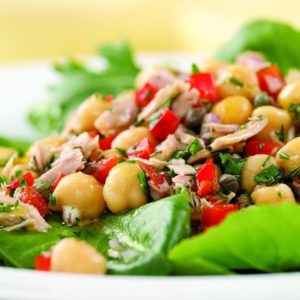Stroke and Nutrition
May is National Stroke Awareness Month. It is important to know how to detect a stroke, possible ways to prevent strokes and how to take care of yourself after a stroke. Every year, more than 795,000 people in the US have a stoke according to the CDC. There are three types of stroke.
- Transient ischemic attack (TIA): This is a Ministroke or warning.
- Ischemic: When a blood clot keeps blood from flowing to the brain. This is most likely due to atherosclerosis-a buildup of fatty deposits in the lining of a blood vessel. This needs treatment.
- Hemorrhagic: When a blood vessel in your brain ruptures or breaks, spilling blood into surrounding tissues.
The National Stroke Association, which is an excellent resource, provides an effective way to identify possible stroke, FAST.
- Face: When you smile, does one side of your face droop?
- Arms: When you raise your arms, does one arm drift downwards?
- Speech: Is your speech slurred or are you having difficulty speaking?
- Time: If you have any of these symptoms, call 911 immediately.
You may have other symptoms such as: confusion, dizziness, severe headaches (the worst headache of your life), nausea and difficulty seeing-blurry vision.
There has been research to support that nutrition plays a role in stroke prevention. In a study published in Stroke And Vascular Neurology, a Cretan Mediterranean diet, which is high in healthy oils, whole grains, fruits and vegetables and low in cholesterol and animal fat has been shown to reduce stroke and heart attack. Americans should consume less than than 300 mg of cholesterol a day and no more than 10% of total calories should come from saturated fat. If you consumed a 2000 calorie diet, this would equal 22 grams or less a day. This plan has been shown to reduce risk and is easy to follow! So what are some good foods to incorporate into your diet?
- Extra virgin olive oil: The first press of the olive
- Bitter greens
- A minimum of 5 servings of fruits and vegetables a day in the US, but this plan recommends 9-11 servings
- Beans
- Nuts
- Seeds
- Two servings of fish a week minimum
- Whole grains
- Low fat dairy
- Very small amounts of red meat (1-2x/month)
- Sweets/added sugar 1x/month maximum
What if you have suffered a stroke? One fifth to one third of post stroke patients have dysphagia-difficulty swallowing foods or liquids, early in recovery. It is important to identify this so that patients do not aspirate, when you breathe a foreign object into your airway, and are monitored accordingly. Healthy eating is critical, but may be limited initially until a patient is able to tolerate solids. Once a patient is able to tolerate food and liquids, it is important to eat as healthy as possible and follow a plan that incorporates fruits, vegetables, whole grains, low fat dairy, lean protein, nuts, seeds and healthy oils. Limit saturated and trans fat, sodium-no more than 2300 mg a day and sugar/added sweets. It is also important to learn healthy size portions.
Eating a healthy diet can reduce risk of stroke. Knowing the signs and symptoms can save your life!
Mediterranean Tuna Antipasto Salad
From: EatingWell Magazine, July/August 2009
Packed with protein and fiber, this tuna and bean salad is ready in a flash. For an extra kick, add a pinch of crushed red pepper or cayenne.
By:EatingWell Test Kitchen
Ingredients 4 servings
- 1 15- to 19-ounce can beans, such as chickpeas, black-eyed peas or kidney beans, rinsed
- 2 5- to 6-ounce cans water-packed chunk light tuna, drained and flaked (see Note)
- 1 large red bell pepper, finely diced
- ½ cup finely chopped red onion
- ½ cup chopped fresh parsley, divided
- 4 teaspoons capers, rinsed
- 1½ teaspoons finely chopped fresh rosemary
- ½ cup lemon juice, divided
- 4 tablespoons extra-virgin olive oil, divided
- Freshly ground pepper, to taste
- ¼ teaspoon salt
- 8 cups mixed salad greens
Preparation
-
- Active 25 m
- Ready In 25 m
- Combine beans, tuna, bell pepper, onion, parsley, capers, rosemary, ¼ cup lemon juice and 2 tablespoons oil in a medium bowl. Season with pepper. Combine the remaining ¼ cup lemon juice, 2 tablespoons oil and salt in a large bowl. Add salad greens; toss to coat. Divide the greens among 4 plates. Top each with the tuna salad.
- Note: Chunk light tuna, which comes from the smaller skipjack or yellowfin, has less mercury than canned white albacore tuna. The FDA/EPA advises that women who are or might become pregnant, nursing mothers and young children consume no more than 6 ounces of albacore a week; up to 12 ounces of canned light tuna is considered safe.
Nutrition information
- Per serving: 306 calories; 16 g fat(2 g sat); 8 g fiber; 28 g carbohydrates; 15 g protein; 223 mcg folate; 15 mg cholesterol; 4 g sugars; 0 g added sugars; 4,961 IU vitamin A; 97 mg vitamin C; 115 mg calcium; 4 mg iron; 467 mg sodium; 752 mg potassium
- Nutrition Bonus: Vitamin C (162% daily value), Vitamin A (99% dv), Folate (56% dv), Iron (22% dv)
- Carbohydrate Servings: 2
- Exchanges: 1 starch, 1 vegetable, 2½ lean meat, 2 fat
Why You Need Selenium Rich Foods
Selenium is a mineral found in the soil. It is a key to one of the body’s antioxidants, glutathione peroxidase, which protects the body from oxidative damage. Oxidative damage is an imbalance between the production of free radicals and the ability of the body to detoxify their harmful effects. Oxidative damage leads to inflammation, so including selenium in your diet can reduce risks associated with heart disease, Alzheimer’s disease, cancer and mental decline. It has also been associated with boosting the immune system and thyroid health. When we are lacking selenium, we show signs of anxiety, irritability, fatigue and depression. Selenium is an essential nutrient, which means we cannot make it and must get it through our diet. The Journal Environmental Health and Preventative Medicine published a study, Selenium: it’s role as antioxidant in human health, which substantiates the positive role of selenium in our diet.
Good sources include:
- Brazil nuts-6-8 nuts
- Brown rice-1 cup cooked
- Tuna-3 ounces
- Chicken-3 ounces
- Eggs-1 large
- Beef-3 ounces
- Milk-1% 1 cup
- Carrots-1 cup raw
- Oatmeal-1 cup
- Lettuce-1 cup
- Lentils-1 cup
If you are going to supplement Selenium, the dosage for adults is 55 mcg. This mineral can be toxic at higher dosages. Do not go above 250 mcg. I recommend consuming selenium through food and not taking added supplements. This is an important nutrient to add to our diet for overall health and there are many yummy options.
Vegetable Fried Rice
From: EatingWell Magazine, April/May 2006
Nothing could be easier than this light version of fried rice. We’ve used instant brown rice, but if you have leftover cold rice or can pick some up at a Chinese restaurant on the way home, use that instead and skip Step 1.
Ingredients2 servings
- 2 tablespoons rice vinegar
- 1 teaspoon toasted sesame oil
- Hot red pepper sauce, to taste
- 1 cup instant brown rice
- 1 cup vegetable broth
- 2 eggs, lightly beaten
- 2 teaspoons canola oil
- 1 clove garlic, minced
- 1 medium red bell pepper, thinly sliced into 1-inch pieces
- 4 scallions, cut into 1-inch pieces
- 4 teaspoons reduced-sodium soy sauce
- 1 tablespoon minced fresh ginger
- 6 ounces asparagus spears, trimmed and cut into 1-inch pieces (about ½ bunch)
May we suggest
365 Everyday Value® Large White Eggs
Everyday Savings: $2.99 per 12 ct
ADVERTISEMENT
Preparation
- Active
40 m
- Ready In
40 m
- Combine rice and broth in a small saucepan. Bring to a boil over high heat. Cover, reduce heat and simmer until the liquid is absorbed, 12 to 14 minutes. Spread the rice out on a large plate and let stand for 5 minutes.
- While the rice is cooling, coat a large nonstick wok or skillet with cooking spray and place over medium heat. Pour in eggs and cook, stirring gently, until just set, 30 seconds to 1 minute. Transfer to a small bowl.
- Heat canola oil in the pan over medium-high; add asparagus and cook, stirring, for 2 minutes. Add bell pepper, scallions, garlic and ginger; cook, stirring, until the vegetables are just tender, about 2 minutes. Add the cooked rice, soy sauce and vinegar to the pan; cook until the liquid is absorbed, 30 seconds to 1 minute. Fold in the cooked eggs. Remove from the heat; stir in sesame oil and hot sauce.
- People with celiac disease or gluten-sensitivity should use soy sauces that are labeled “gluten-free,” as soy sauce may contain wheat or other gluten-containing sweeteners and flavors.
Nutrition information
- Serving size: 2 cups
- Per serving: 360 calories; 14 g fat(2 g sat); 6 g fiber; 46 g carbohydrates; 14 g protein; 94 mcg folate; 186 mg cholesterol; 5 g sugars; 2,778 IU vitamin A; 85 mg vitamin C; 70 mg calcium; 3 mg iron; 767 mg sodium; 446 mg potassium
- Nutrition Bonus: Vitamin C (142% daily value), Vitamin A (56% dv), Folate (24% dv)
- Carbohydrate Servings: 3
- Exchanges: 2 starch, 2 vegetable, 1 medium-fat meat, 1½ fat





